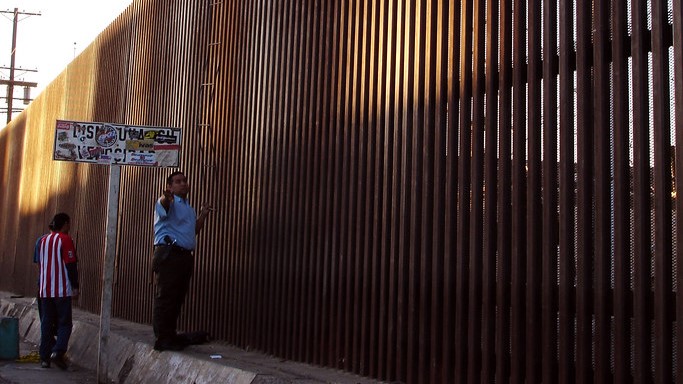Last month, Mexican troops
rescued 60 migrants who were being held captive by criminals in northern Mexico. In an email interview,
Laura Valeria González-Murphy, author of the recent book "
Protecting Immigrant Rights in Mexico," explained Mexico’s evolving policy toward immigrants and migrants within its borders.*
WPR: Which countries are the top sources of immigrants to Mexico, and what factors drive them to emigrate?
Laura Valeria González-Murphy: The United States, Guatemala and Spain account for over 70 percent of Mexico’s immigrants. The U.S. accounts for the largest proportion, with 738,103 U.S. persons immigrating to Mexico in 2010. Although the overall number of immigrants in Mexico has increased over the years, they represented less than 1 percent of Mexico’s total 2010 population of 112 million. Recently, the number of immigrants to Mexico from Guatemala, Honduras and El Salvador has increased numerically. In their attempts to reach the U.S., some migrants from these countries remain in Mexico.
Cheaper retirement options, better weather and business opportunities are some of the reasons behind U.S. immigration to Mexico. But the recent increase of U.S. immigrants to Mexico is also linked to U.S. repatriation of undocumented Mexicans, who return with their American spouses or American-born children. The main drivers of Central American immigration to Mexico are poverty, lack of economic and educational opportunities in immigrants’ home countries and family reunification. Today, these issues are compounded by heightened violence, both generalized and perpetrated by drug cartels.
WPR: What is Mexico's policy toward immigrants, in terms of both border security and accommodating those who arrive?
González-Murphy: Acknowledging Mexico’s immigration policy as selective and restrictive, in 2004 government officials began promoting a policy addressing more than migrant flows and border security issues, but also immigration’s multidimensional context, including economic, cultural and social aspects. Referring to it as a policy of “friendly but secure gates,” officials eased entrance restrictions for qualified immigrants, such as businessmen and investors, and instituted programmatic changes. These changes included revised standards for migrant detention centers as well as humanitarian programs, such as the Beta Group and the Infant Protection Officers program, designed to assist transit migrants. In 2011, Mexico implemented very progressive legislative changes by approving a liberal migration law, human rights reforms to the 1917 constitution and the Law of Refugees. Under these reforms, foreigners and Mexican nationals are guaranteed equal treatment; immigrants, regardless of status, have the right to education and health services; there are family unity mechanisms; and, before the government takes action such as deportation, it must take into consideration the specific needs of migrant children and other vulnerable individuals, including women and the disabled, and provide adequate services. The new law grants migrants judicial rights including due process, creates a Center for Trust Evaluation and Control to train immigration personnel and curtail corruption, and formalizes undocumented immigration as an administrative infraction and not a crime.
WPR: What are the needed reforms to Mexico's immigration policy, and what are the near-term prospects for their enactment?
González-Murphy: Despite these policy achievements, Mexico’s immigration policies lack specificity and permit discretionary practices. Internal security controls across Mexico remain stringent, and human rights violations are a constant. Advocacy groups claim that security remains the priority in Mexico’s immigration policies, as their requests for transit visas to protect the undocumented from criminals remain unaddressed. Although today, the protection of migrant rights has the regulatory means to become a reality, Mexico’s deep-seated culture of corruption, distrust toward government officials and prevalent attitude of ignoring the law blocks the implementation of such protections. Moreover, Mexico faces a real challenge to its liberal reforms in the form of U.S. pressure to secure its borders.
*Editor's note: The original version of this article used an outdated reference toGonzález-Murphy's professional affiliation. WPR regrets the error.
Photo: U.S.-Mexico border, Mexicali, Mexico, Nov. 25, 2006 (photo by Flickr user omaromar licensed under the Creative Commons Attribution 2.0 Generic license).

